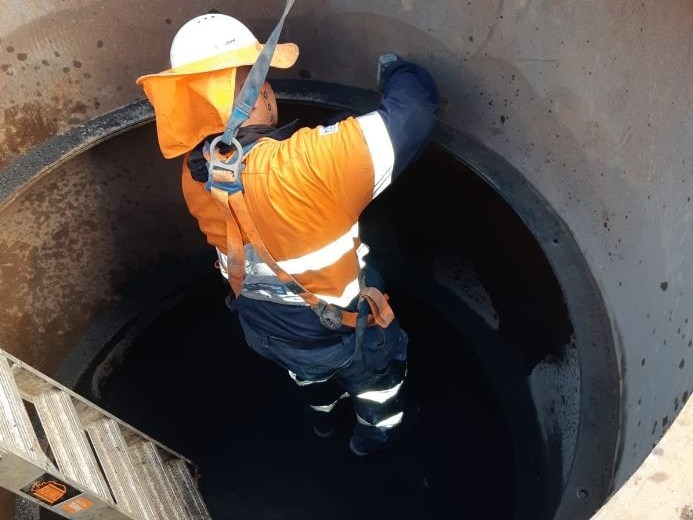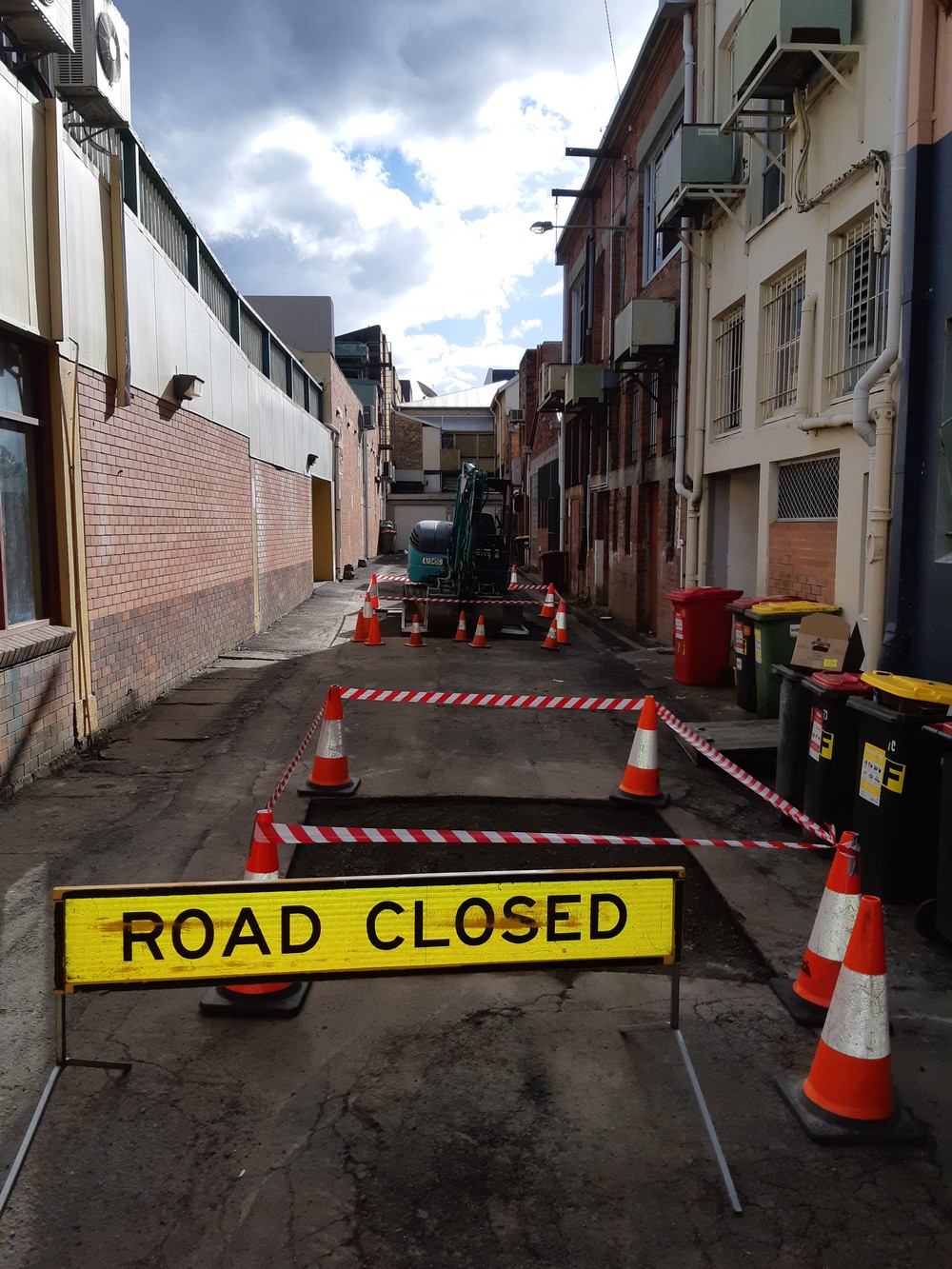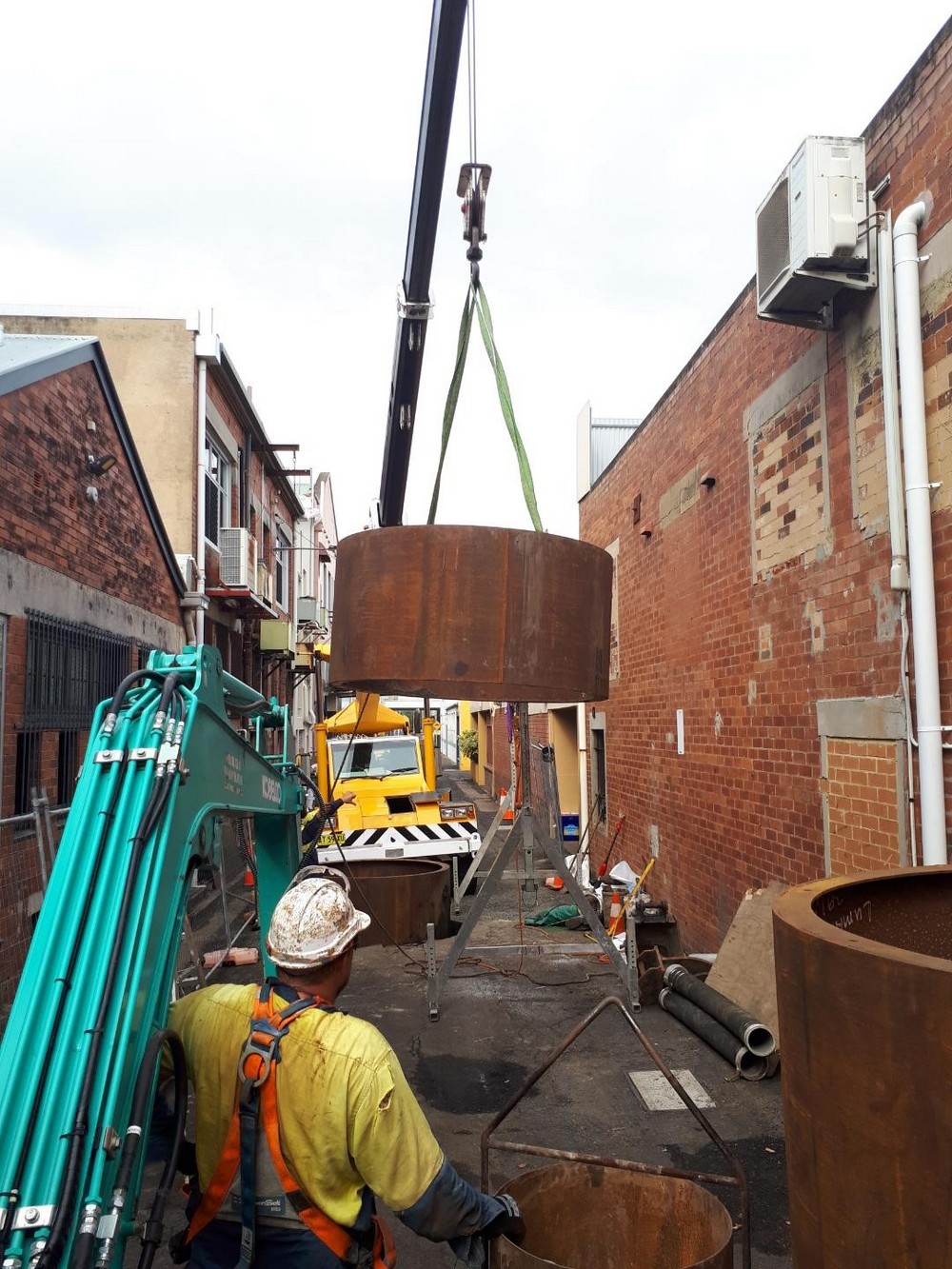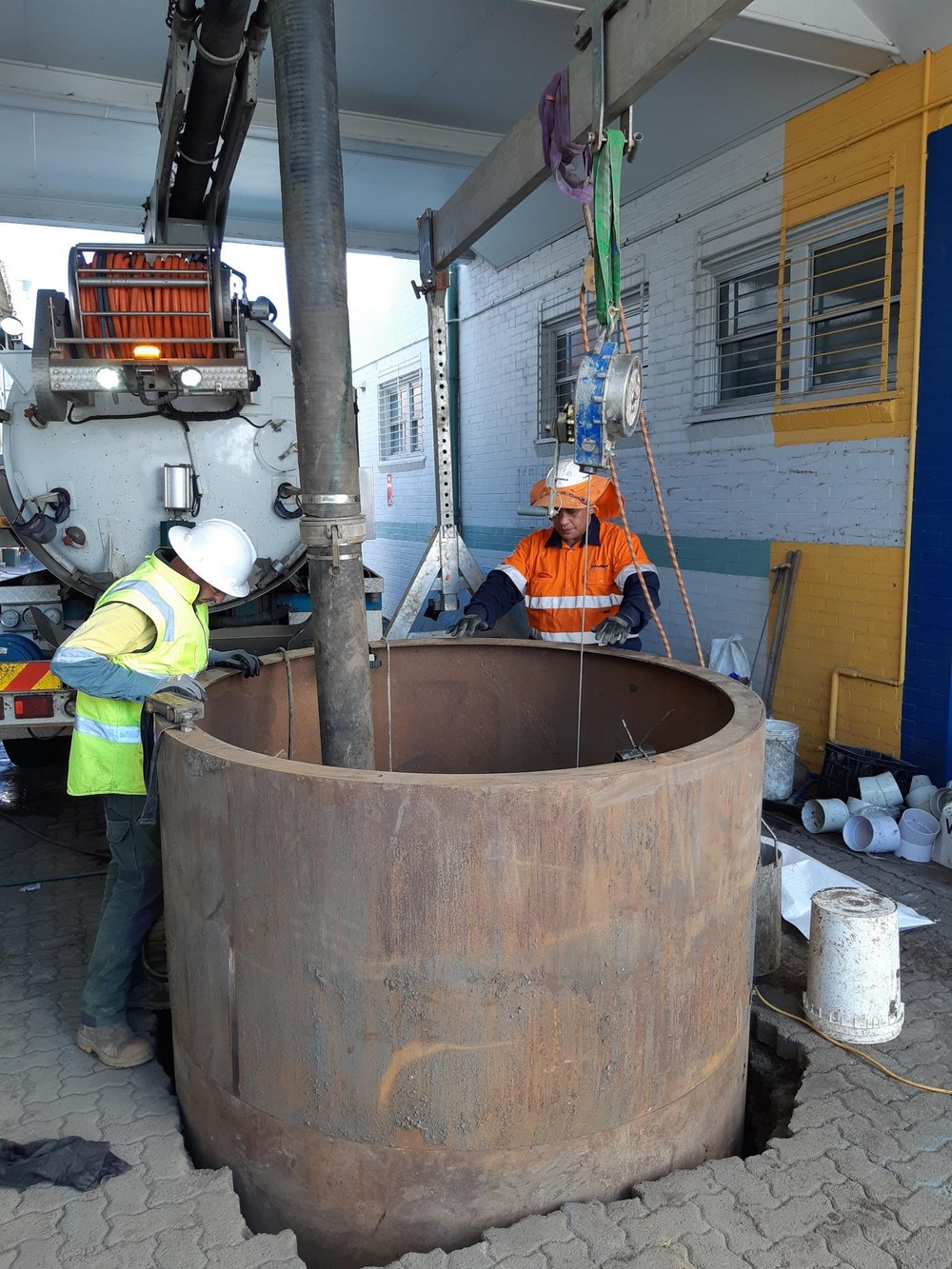
The collapse of Lismore City Council’s 100-year-old sewer line needed more than just a relining repair: it required an innovational approach to overcome the serious challenges concurrent with this 5-metre-deep sewer that was situated in one of Lismore’s narrowest laneways.
Nestled in the heart of Lismore down the confined alleyway of Larkin Lane, Lismore City Council’s wastewater asset was in desperate need of repair. Nine broken junctions buried 5-metres below ground required a complete dig and repair prior to relining the 150Ø sewer. Continuing with its innovative momentum, Interflow stepped ‘outside-the-box’ and used methods that had never been previously attempted to successfully deliver the project.
Faced with the impossible
Adorned with avant-garde street art and uber-chic cafés, the bourgeoning street culture of Larkin Lane came to an abrupt halt when a sewer line collapsed directly underneath the 5.5-metre-wide laneway.
The sewer line runs down the laneway which is flanked by two-storey buildings on each side. This made it extremely difficult to repair the pipeline’s nine broken junctions, which required deep excavation of 5-metres belowground.
To make things more complex, the close proximity of infrastructure meant that any additional load around the buildings would be imposed on the pipe through surrounding soil.

Interflow’s Project Manager who led the project, John Adamo, explains how this affected the excavation plan to access the collapsed junctions.
“The buildings were in a ‘zone of influence’, which meant their weight would directly impact the walls of the trench,” he says.
“The pipeline also had high flow in the main and house service lines, making excavation especially difficult.”
‘Tough mudder’ at its finest
Another factor was that operators had to work in extremely muddy conditions. This made the work area very unstable and significantly increased the risk of injury.
“Deep excavation was needed in slippery back mud – it is a very sticky, wet and heavy clay and this type of ground collapses easily,” John recalls.
Larkin Lane is also one of Lismore’s most popular tourist attractions. This factor, combined with the everyday hustle and bustle of residents, meant the lane experienced constant heavy pedestrian foot traffic.
To carry out the works with minimal disruption, safety management and community relations played a pivotal role in the success of this project.

Interflow’s innovative approach
During the project’s planning phase, the first step involved conducting a geographical report of the area, which determined the most appropriate solution. As a result, Interflow installed a custom designed steel casing tube, which stabilised the working area and reinforced the underground structure.
“During the initial stage, we had the steel casing specifically engineered after the geographical report of the area was undertaken,” says John.
“Our steel casing design was strong enough to resist the ground pressure from the soil and withstand any weight imposed on the trench from the surrounding infrastructure.”
The sturdy solution
The steel casing provided a robust solution due to its ‘hoop strength’, adding extra security to the outer maintenance holes. Its annular shape also meant that it could resist high impact areas. This eliminated potential disruption to the trench imposed from buildings that may have incurred as a result of poor ground conditions.
The confined space also meant that a large excavator could not be used. To overcome this, John and his crew of fieldworkers used a smaller 6 tonne excavator to lift each section of the 1800mm diameter casing into the ground and bolted them together.
This modular technique required minimal manual handling and was much safer for operators. It also ensured a small footprint and maintained Larkin Lane’s reputation for spontaneous creative expression and vibrant culture.

In consultation with key community stakeholders, John managed to keep local businesses operating as usual with minimal disruption to the surrounding community.
“The site was very contained, and the laneway received a lot of foot traffic from restaurants and cafés,” he says.
“Keeping a small footprint means we could maintain access to the busy café walkway that backed onto the lane way.”
The renewal of Lismore City Council’s sewer line in Larkin Lane is a true example of how Interflow beat the odds: the company’s ability to think swiftly and act creatively in some of the most extreme conditions reflects how it constantly pushes the status quo to solve customers’ problems.
Comment below to have your say on this story.
If you have a news story or tip-off, get in touch at editorial@governmentnews.com.au.
Sign up to the Government News newsletter





Michael Andjelkovic on: Council takes on NSW government in court
jdvukovic@bigpond.com on: Council takes on NSW government in court
Tyrone Peter Fernandes on: NSW announces biosecurity appointments